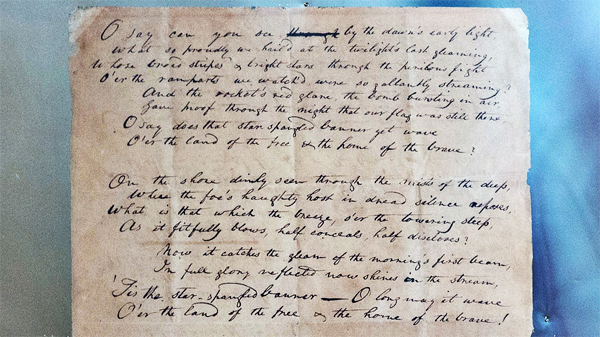
Francis Scott Key pens “The Star-Spangled Banner” on September 14 , 1814
Francis Scott Key pens “The Star-Spangled Banner”: On September 14, 1814, Francis Scott Key pens a poem which is later set to music and in 1931 becomes America’s national anthem, “The Star-Spangled Banner”.
The poem, originally titled “The Defence of Fort M'Henry”, was written after Key witnessed the Maryland fort being bombarded by the British during the War of 1812.
Key was inspired by the sight of a lone U.S. flag still flying over Fort McHenry at daybreak, as reflected in the now-famous words of the “Star-Spangled Banner”:
“And the rocket’s red glare, the bombs bursting in air, Gave proof through the night that our flag was still there.”

On June 18, 1812, America declared war on Great Britain after a series of trade disagreements.
In August 1814, British troops invaded Washington, D.C., and burned the White House, Capitol Building and Library of Congress. Their next target was Baltimore.
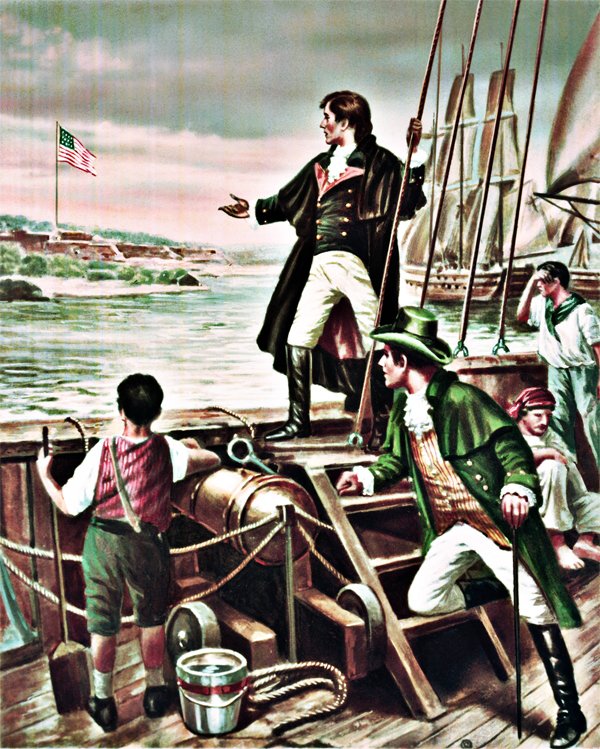
The Battle of Fort Henry in Baltimore Harbor: After one of Key’s friends, Dr. William Beanes, was taken prisoner by the British, Key went to Baltimore, located the ship where Beanes was being held and negotiated his release.
However, Key and Beanes weren’t allowed to leave until after the British bombardment of Fort McHenry. Key watched the bombing campaign unfold from aboard a ship located about eight miles away.
After a day, the British were unable to destroy the fort and gave up. Key was relieved to see the American flag still flying over Fort McHenry and quickly penned a few lines in tribute to what he had witnessed.
Francis Scott Key was born on August 1, 1779, at Terra Rubra, his family’s estate in Frederick County (now Carroll County), Maryland. He became a successful lawyer in Maryland and Washington, D.C., and was later appointed U.S. attorney for the District of Columbia.
History Channel / Wikipedia / Encyclopedia Britannica /
National Parks Service.gov / Battlefields.org / Battlefields.org / Smithsonian.edu /
Francis Scott Key pens “The Star-Spangled Banner” on September 14 , 1814(YouTube) 
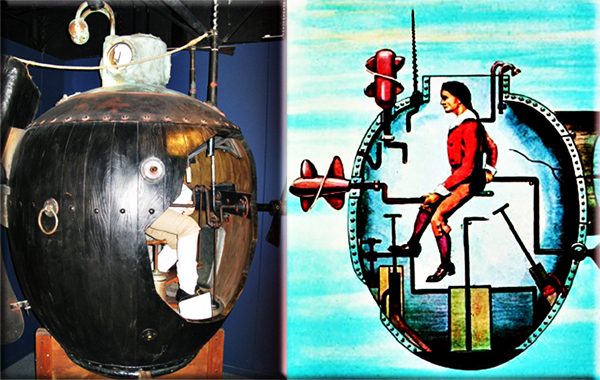
World’s first submarine attack on September 07, 1776
World’s first submarine attack: On this day in 1776, during the Revolutionary War, the American submersible craft Turtle attempts to attach a time bomb to the hull of British Admiral Richard Howe’s flagship Eagle in New York Harbor. It was the first use of a submarine in warfare.
Submarines were first built by Dutch inventor Cornelius van Drebel in the early 17th century, but it was not until 150 years later that they were first used in naval combat. David Bushnell, an American inventor, began building underwater mines while a student at Yale University. Deciding that a submarine would be the best means of delivering his mines in warfare, he built an eight-foot-long wooden submersible that was christened the Turtle for its shape. Large enough to accommodate one operator, the submarine was entirely hand-powered. Lead ballast kept the craft balanced.
Donated to the Patriot cause after the outbreak of war with Britain in 1775, Ezra Lee piloted the craft unnoticed out to the 64-gun HMS Eagle in New York Harbor on September 7, 1776. As Lee worked to anchor a time bomb to the hull, he could see British seamen on the deck above, but they failed to notice the strange craft below the surface. Lee had almost secured the bomb when his boring tools failed to penetrate a layer of iron sheathing. He retreated, and the bomb exploded nearby, causing no harm to either the Eagle or the Turtle.
During the next week, the Turtle made several more attempts to sink British ships on the Hudson River, but each time it failed, owing to the operator’s lack of skill. Only Bushnell was really able to competently execute the submarine’s complicated functions, but because of his physical frailty he was unable to pilot the Turtle in any of its combat missions. During the Battle of Fort Lee, the Turtle was lost when the American sloop transporting it was sunk by the British.
Despite the failures of the Turtle, General George Washington gave Bushnell a commission as an Army engineer, and the drifting mines he constructed destroyed the British frigate Cereberus and wreaked havoc against other British ships. After the war, he became commander of the U.S. Army Corps of Engineers stationed at West Point.
History Channel / Wikipedia / Encyclopedia Britannica / Connecticut History.org /
NavSource (Naval History).org / NAVY Life Official Blog of the U.S. Navy / Breeds Hill Institute.org
First Combat Submarine The “Turtle” - 1776 (YouTube search) 
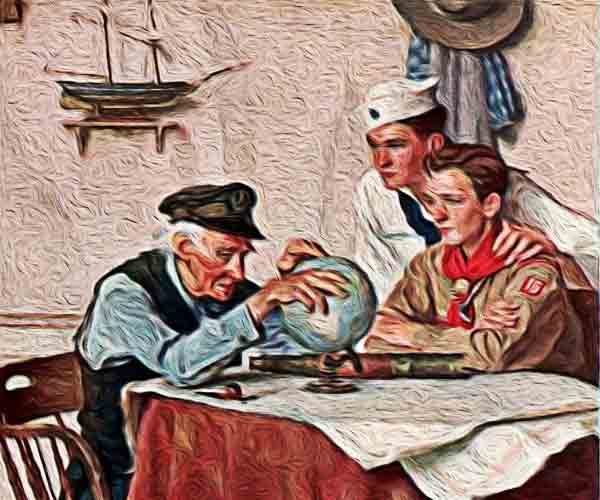
Understanding Military Terminology
Reinforcing Obstacles
(DOD) Those obstacles specifically constructed, emplaced, or detonated through military effort and designed to strengthen existing terrain to disrupt, fix, turn, orblock enemy movement.
See also Obstacle.
Joint Publications (JP 3-15) Barriers, Obstacles, and Mine Warfare for Joint Operations
Reintegrate
(DOD) In personnel recovery, the task of providing medical care and psychological decompression to allow the conduct of appropriate debriefings to ultimately return recovered personnel back to duty and their family.
Joint Publications (JP 3-50) Personnel Recovery
Release Altitude
(DOD) Altitude of an aircraft above the ground at the time of ordnance release.
Joint Publications (JP 3-09.3) Close Air Support - Intelligence Resource Program
Joint Publication - Department of Defense Dictionary of Military and Associated Terms
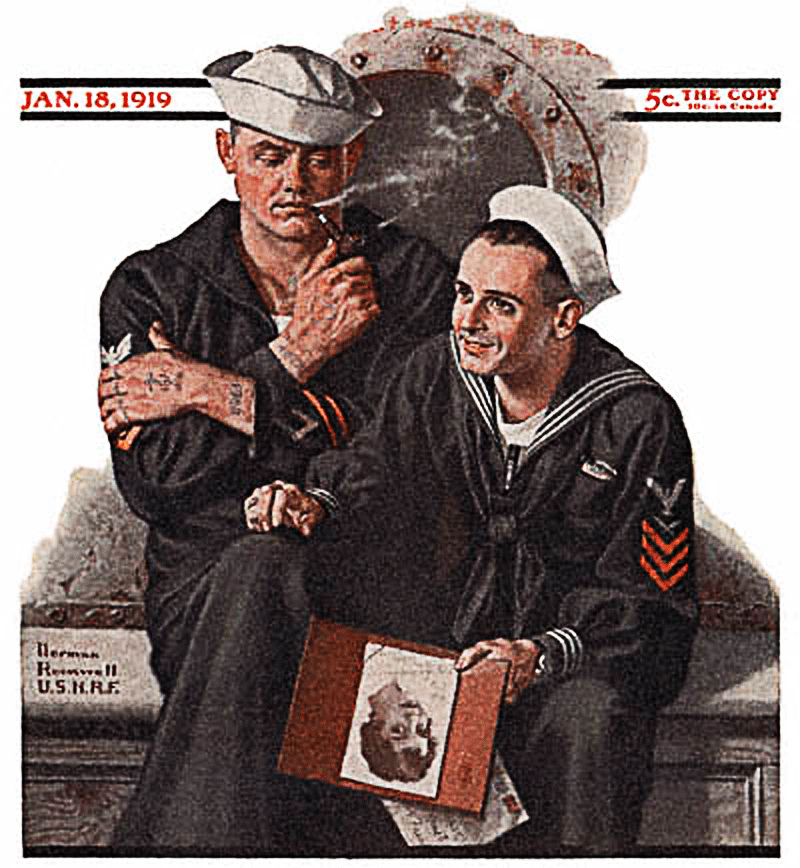
The Old Salt’s Corner
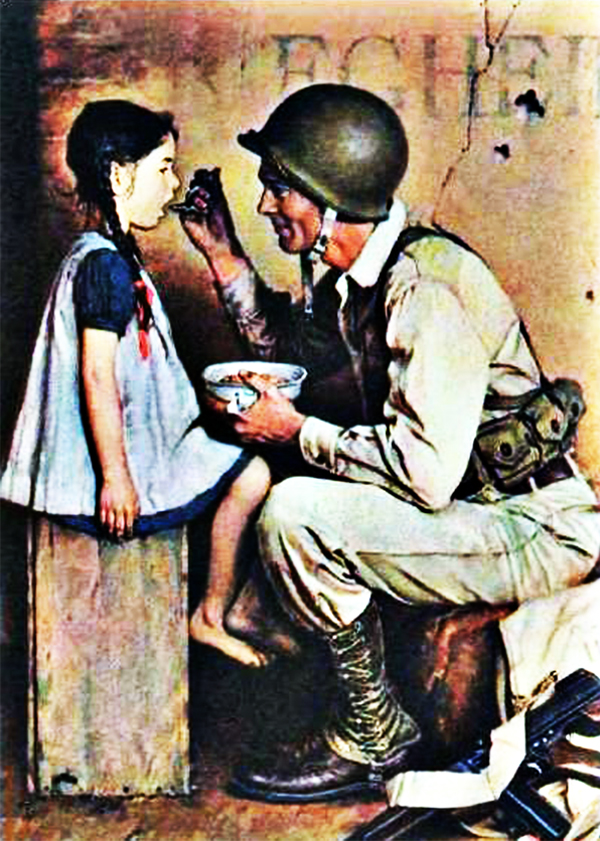
“A Toast To A Veteran”
Crystal is the goblet, clear, like the vision of our mission.
Red is the wine, dark, to remind us of those who have gone before us.
Strong is the hand that holds it, yet tender, when the time is nigh.
Tall is the Warrior, whatever stature they may be.
We stand together brothers, comrades, and mates.
We pause to respect the departed, and reflect, on the life we choose to follow.
We lift these glasses high in honor, tribute and glory to all who may be called.
~ American Armed Forces Veteran

“I’m Just Sayin”
“One loyal friend is worth ten thousand relatives.”
“Much effort, much prosperity.”
“The good and the wise lead quiet lives.”
“Silence is true wisdom's best reply.”
“Nothing has more strength than dire necessity.”
“Danger gleams like sunshine to a brave man's eyes.”
“The bold are helpless without cleverness.”
“Cleverness is not wisdom.”
“Leave no stone unturned.”
“When a good man is hurt,
all who would be called good must suffer with him.”
“Human misery must somewhere have a stop;
there is no wind that always blows a storm.”
~ Euripides

“Thought for the Day”
“Wise to resolve, and patient to perform.”
“In youth and beauty, wisdom is but rare!”
“How vain, without the merit, is the name.”
“In youth and beauty, wisdom is but rare!”
“Light is the task where many share the toil.”
“Even were sleep is concerned, too much is a bad thing.”
“Hunger is insolent, and will be fed.”
“It is not good to have a rule of many.”
“The difficulty is not so great to die for a friend,
is to find a friend worth dying for.”
“There is nothing nobler or more admirable than when two people who see eye to eye keep house as man and wife,
confounding their enemies and
delighting their friends.”
“Hateful to me as are the gates of hell,
Is he who,
hiding one thing in his heart,
Utters another.”
~ Homer

“What I Learned”
“You cannot teach a crab to walk straight.
“Under every stone lurks a politician.”
“A man may learn wisdom even from a foe.”
“Hunger knows no friend but its feeder.”
“You should not decide until you have heard what both have to say.”
“The wise learn many things from their enemies.”
“Let each man exercise the art he knows.”
“High thoughts must have high language.”
“Quickly, bring me a beaker of wine,
so that I may wet my mind and say something clever.”
“Your lost friends are not dead,
but gone before,
advanced a stage or two upon that road which you must travel in the steps they trod.”
“Characteristics of a popular politician:
a horrible voice,
bad breeding,
and a vulgar manner.”
~ Aristophanes
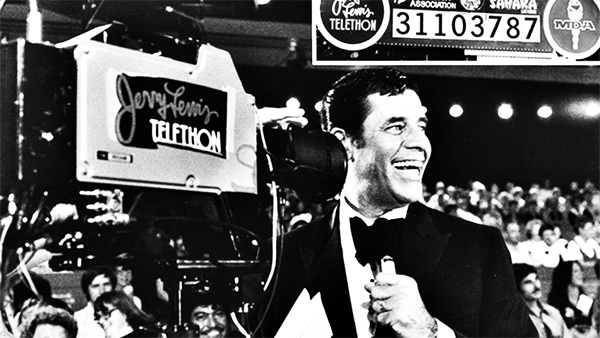
Mr. Answer Man Please Tell Us: What is the History of the Jerry Lewis Telethon
The National Muscular Dystrophy Association announced that in 2011, for the first time since 1966, Jerry Lewis would not be headlining the annual MDA Telethon for “Jerry's Kids”. After earning more than $2 billion, the show was going on without him. Here's a look back at the origin of the telethon, some of the highlights, and what might have inspired Jerry to get involved.
Background
TV's first telethon took place in 1949. It was New York's Damon Runyon Memorial Cancer Fund Telethon, hosted by Milton Berle. One of the guests on that very first telethon was a brash young comedian who appeared with his singing partner, Dean Martin. The young comic was, of course, Jerry Lewis. At the time, Martin and Lewis were the hottest act in all of show biz.
The comedy team later made an appearance at the 1952 Olympic Fund Telethon, hosted by Bob Hope and Bing Crosby. There is surviving footage of this appearance by Martin and Lewis, and they are uninhibited, wild, and electric. Incredibly, when Martin and Lewis come on stage, Bing Crosby rushes off in fear. Crosby was terrified Lewis would pull off Crosby's toupee, and he never did reappear while the boys were on.
In the early 1950s, Lewis was asked to host a telethon for a little-known disease called muscular dystrophy. Lewis accepted and, together with Martin, put on the very first MD telethon.
The two hosted other telethons together until their split as a team in 1956. Martin went on to other things, but Lewis never stopped. Over the years, he hosted several other 4-hour MD telethons sans Martin, much shorter than the almost 24-hour telethons to which we've become accustomed.
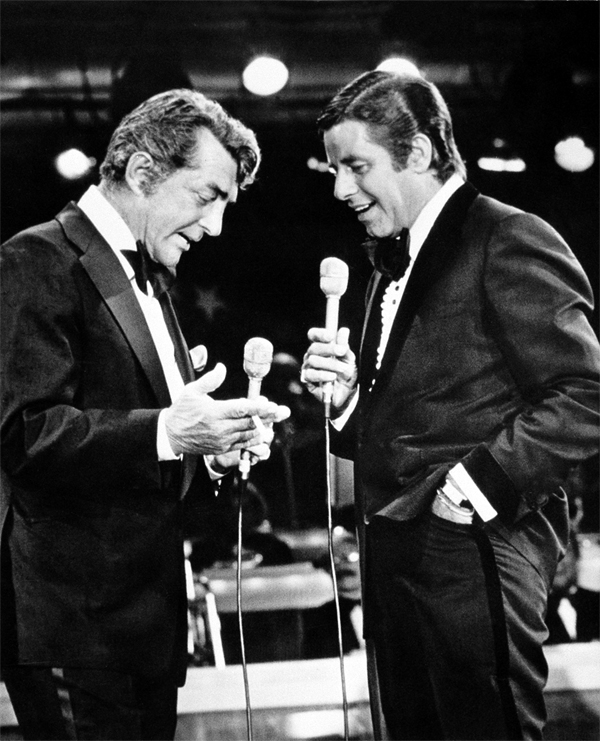
The First Jerry Lewis Labor Day Weekend Telethon
In 1966, the first official Jerry Lewis Telethon for muscular dystrophy took place over the Labor Day weekend, broadcast from the Americana Hotel in New York. Some were skeptical about the success of the undertaking, as many people were not home on Labor Day. But surprisingly, the telethon was a huge success, raising just over one million dollars.
Big Spenders
Jerry Lewis's annual Labor Day telethons went on to raise more than 2 billion dollars in donations to fight muscular dystrophy. Lewis claimed his goal each year was to get “one dollar more” than the previous year. The biggest single out of his own pocket to the cause. He has been accused - including by some who are stricken with MD - donations over the years have come from the Firefighters Association, who have given more than $250,000 to the cause.
Nothing has hurt Lewis more than accusations that he has pocketed some of the donated money himself. He vigorously denies this claim, and he even swears he has given $7 million of exploiting his “kids”, portraying them as pitiable victims who just need a big charity to take care of or cure them. Lewis has fought back against these charges, too.
Celebrity Guest Stars
Many of the biggest celebrities in show business have either hosted or appeared on Lewis's telethons over the years, including Frank Sinatra, Sammy Davis Jr., and three of the Beatles. (In John Lennon's appearance with wife Yoko Ono, he stated, “Jerry is one of our favorite comedians.”) The ultra-reclusive Joe DiMaggio came on to answer the phones one year, and even a U.S. President - Ronald Reagan - made an appearance.
But the all-time highlight in telethon history was unequivocally the reunion of Jerry Lewis with his former partner Dean Martin in 1976, staged by their mutual friend Frank Sinatra. It was an incredible moment in television history, being Martin and Lewis's first public appearance together in 20 years. The two tearfully hugged, kidded around, and cracked a few one-liners before Martin and Sinatra sang, after which Martin disappeared with a wave and a friendly “Ciao!”
Lewis has always worn his heart on his sleeve regarding his deep affection for his former partner, while Martin was always "Mr. Macho" and rarely displayed any kind of emotion in public. But if you watch the video, you will see Martin quickly sneak in a brief kiss on Lewis's cheek as they hug. (I've always felt this quick kiss was very telling about Martin's real affinity for his erstwhile partner.)
Why Did He Do It?
One of the biggest mysteries of all regarding his unceasing dedication to the Muscular Dystrophy Association is, “Why does Jerry do it?” Oddly, Lewis has never revealed to anyone the exact reason. While no one may ever know the real reason, a little-known story about Lewis is very telling.
When he was two years old, Lewis developed a strange and potentially crippling disease. According to Lewis, his beloved grandmother nursed him and, although a very strict Jew, cooked him bacon and "crammed it into his mouth" to help fight off the impending sickness. What potential disease it was we have no idea, but Lewis has stated this story is true. If so, the frightening memory of a debilitating disease may have had at least some impact on his tireless work in his fight against muscular dystrophy.
MDA.org - Muscular Dystrophy Association
• Mental Floss
• Quora
• Wikipedia
• World Standards

NAVSPEAK aka U.S. Navy Slang
Walking, Talking Road Mark: Used during boot camp to refer to a recruit that is a complete loss at military bearing, appearence, and formalities, a recruit that causes his company to constantly lose points at inspections, drills, etc.
These recruits usually end up getting ASMO'ed to a company that is earlier in training.
War Chicken: A derogatory term for the Special Warfare Insignia earned by Navy SEALS.
Wardroom: Officer's mess, or dining room. Also used to collectively refer to all the officers at a command.
Warm Blood: An individual who has not crossed the Arctic Circle or Antarctic Circle, who must go through rituals, that sometimes cross the line to be hazing, to become a Blue Nose or Red Nose, respectively. See crossing the line, shellback, and pollywog.
Warrant: A warrant officer. In the navy warrants are generally older and more experienced in a particular area of expertise than a commissioned line officer, much like an “LDO”. Warrants are competitively selected from the senior (E7–E9) enlisted ranks. By definition are technical specialists.
Watch: A period of duty, usually of four-hours duration, six-hours on submarines. The day at sea has long been divided into watches, which are called:
Midwatch or Balls to 4 (0000 to 0400);
Morning or Rev (Reveille) watch (0400 to 0800);
Forenoon Watch (0800 to 1200);
Afternoon Watch (1200 to 1600); dog watches (1600-1800 and 1800-2000); and the first watch (2000 to 2400).
Dog Watches (1600-1800 and 1800-2000); and
The First Watch (2000 to 2400).
Watch Condition: Ship's readiness condition:(Denoted by Roman numerals):
I: Maximum Readiness (GQ) all hands at their battle stations, material condition Zebra set (maximum damage control readiness.)
IA: (“One Alpha”) Modified GQ to conduct amphibious operations.
IE: or Modified GQ, Relaxed GQ condition during extended GQ period, primarily to allow chow;
II: Similar to IA, for extended Naval Gunfire Support;
III: Wartime cruising, higher state of readiness with some battle stations manned;
IV: Normal (Peacetime) underway watch.
Wiktionary.org

Just for you MARINE
Walking John: Nickname for a Marine marching in dress blues uniform that appeared on World War I-era recruiting posters.
War Belt: A web belt used to carry canteens in pouches and other miscellaneous equipment.
War Paint : Camouflage face paint.
Watch: Formal tour of duty of prescribed length, usually a guard-related task.
Wikipedia.org
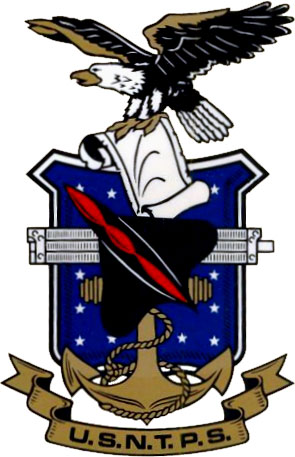
Naval Aviation Squadron Nicknames
U.S. Naval Test Pilot School Naval Aviation Squadron Nicknames: Other Fixed Wing Aircraft Units - nicknamed the “*”
United States Navy - Naval Air Station Patuxent River - St. Mary’s County, Maryland, on the Chesapeake Bay near the mouth of the Patuxent River / 1945 - present
Wikipedia.org

Where Did That Saying Come From?

“The exception that proves the rule:”
Meaning: Normally with these meanings and origins the meaning is well-understood or self-evident and the interesting aspect is how, where and when the phrase originated. This one is a little different - it's the meaning that is generally not understood.
To the untutored ear it might appear to mean 'if there's a rule and I can find a counter-example to it, then the rule must be true'. This is clearly nonsense; for example, if our rule were 'all birds can fly', the existence of a flightless bird like a penguin hardly proves that rule to be correct. In fact it proves just the opposite.
So, and here the maxim 'a little learning is a dangerous thing' comes into play, it has been suggested that it's an alternative meaning of the word prove that is the source of the confusion. Prove can mean several things, including 'to establish as true' and 'to put to trial or to test'.
The second option is what is used in 'proving ground', 'the proof of the pudding is in the eating', etc. It could be argued then that the phrase means 'it is the exception that tests whether the rule is true or not'. In our example the existence of a bird that can't fly would put the 'all birds can fly' rule to the test (and find it wanting).
That's all very well and most people would be happy to stop there. Unfortunately, when we go back to the legal origin of the phrase we see that it doesn't mean that at all. It's the word exception rather than prove that is causing the confusion here. By exception we usually mean 'something unusual, not following a rule'. What it means here though is 'the act of leaving out or ignoring'.
If we have a statement like 'entry is free of charge on Sundays', we can reasonably assume that, as a general rule, entry is charged for. So, from that statement, here's our rule:
“You usually have to pay to get in.”
The exception on Sunday is demonstrating that the rule exists. It isn't testing whether the incorrect rule 'you have to pay' is true or not, and it certainly isn't proving that incorrect rule to be true.
History: It's a legal maxim, established in English law in the early 17th century. Written, as law was in those days, in Latin:
“Exceptio probat regulam in casibus non exceptis”
and is interpreted to mean ‘exception confirms the rule in the cases not excepted’
It has (slightly modified) examples in print going back to at least 1617:
Collins: Indefinites are equivalent to vniversalls especially where one exception being made, it is plaine that all others are thereby cut off, according to the rule Exceptio figit regulam in non exceptis.
While not the earliest citation, this, from Giovanni Torriano's Piazza universale di proverbi italiani, or A Common Place of Italian Proverbs, 1666, expresses the idea clearly:
“The exception gives Authority to the Rule.”
Phrases.org UK

Science & Technology

Featured: Researchers enhance human-robot interaction by merging mixed reality and robotics
• New species of stegosaur is oldest discovered in Asia, and possibly the world
Magnetic excitations could provide information transfer without heat loss
• Dead or alive: Microorganisms in soil shape the global carbon cycle
• During droughts, thirstier mountain forests could mean less water downstream
The future of data storage is double-helical, research indicates
• How can computer engineering predict the future of gene synthesis?
• Scientists discover molecule that kills pancreatic cancer cells
More alcohol, less brain: Study finds an association that begins with an average of just one drink a day
• New research suggests a causal link between blood group and severe COVID-19
• Study finds agreeableness a helpful trait for general success in life
Phys.org / MedicalXpress / TechXplore

FEATURED: Lymphocyte competition protects the liver
• Weaker interfaces enable conformal films
Potato farmers conquer a devastating worm - with paper made from bananas
• U.N. panel warns of global warming's toll on humans and nature
Scientists want to create a library of every sound in the ocean
• Mopping can create air pollution that rivals city streets
French nuclear regulator halts assembly of huge fusion reactor
• Rapid evolution in salmon life history induced by direct and indirect effects of fishing
Science AAAS

Bizarre News (we couldn’t make up stuff this good - real news story)
Odd circular shape beneath the ocean in Google Earth images is probably not aliens
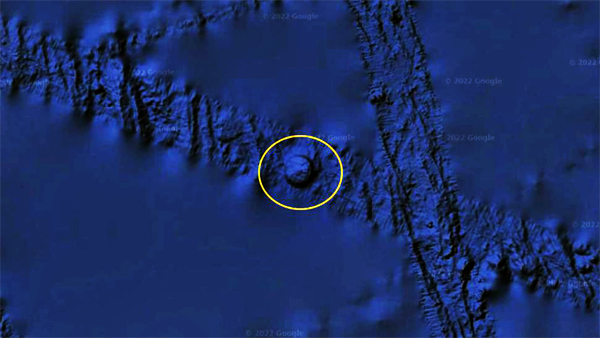
Here's the real science behind the seafloor “UFO”.
A circular shape on the seafloor visible on Google Earth is raising cries of “UFO”, but chances are … it's not aliens.
The sighting comes courtesy Scott Waring, proprietor of UFOsightingsdaily.com and frequent discoverer of objects that he dubs "100% proof" of ancient aliens. (He's also an avid peruser of photographs from NASA's rovers, and he has claimed to find everything from a monkey on Mars to the 24-foot-tall (7.3 meters) body of a Martian monarch killed in battle 1 million years ago.)
Upping the UFO ante, the shape is located off the coast, sort of near Peru's Nazca Lines, a series of enormous geoglyphs built by the Nazca people almost 2,000 years ago. These lines are a common fixation for conspiracy theorists, who sometimes claim aliens were involved in their construction.
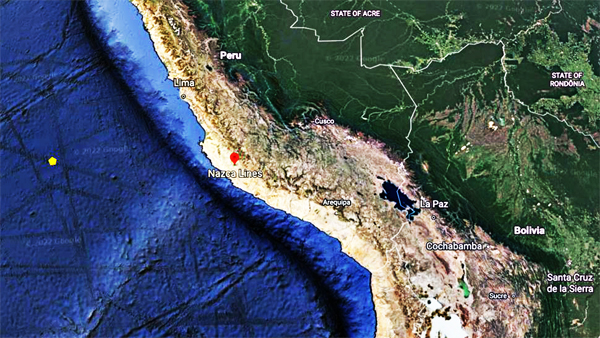
So, what did Waring find? A circle, some 4.2 miles (6.8 kilometers) in diameter, visible about 352 miles (566 km) off the coast of Lima. The circle appears to rise from the seafloor like a hill or mountain.
Most likely, though, this ocean floor nubbin is a data artifact. Strange shapes can appear for many reasons on the ocean floor in Google Earth. The company uses data from multiple sources to map out the seafloor. These sources have different resolutions, or levels of details, and when they are stitched together, strange shapes sometimes appear.
In a 2016 blog post, Google developers pointed out one data quirk that can lead to strange hill-and-valley artifacts:
The background map of the ocean floor is based on a map made by the Scripps Institution of Oceanography, which uses gravity measurements from satellites to roughly map out the ups and downs of the seafloor (also known as the ocean's bathymetry).
For more detailed mapping, the company gets data from ship-based sonar surveys. These sonar surveys send pulses of sound down toward the ocean floor, then record the echoes to get a high-resolution picture. At times, the rough satellite-based measurements and the shipboard measurements don't agree, and a single point of data from one or the other can lead to what looks like a steep hill or dip.
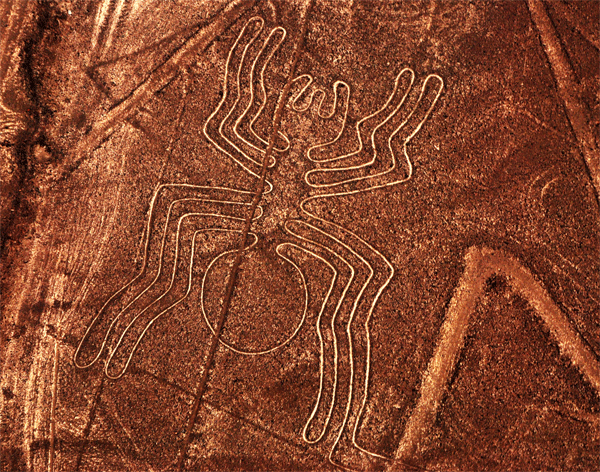
Notably, the “UFO” spotted by Waring sits right in the middle of a transect line where a shipboard sonar survey has clearly passed, making it possible that the shape is a side effect of stitching together multiple data sources. These long lines are visible all across the ocean floor on Google Earth, and are sometimes mistaken for signs of a lost civilization.
Odd ocean floor shapes on Google Earth illustrate just how little is known about the seafloor. The satellite imagery that covers almost the entire ocean floor can resolve features down to about 0.9 miles (1.5 km), while modern seafloor sonar can reveal details on the order of 328 feet (100 m). According to the National Oceanic and Atmospheric Administration (NOAA), only 5% of the ocean floor has been mapped by modern sonar.
Related: Photos: The mysterious Nazca Lines
NINE things we learned about aliens in 2021
Aliens could be sucking energy from black holes
Live Science (02/23/2022) 


SONG FACTS
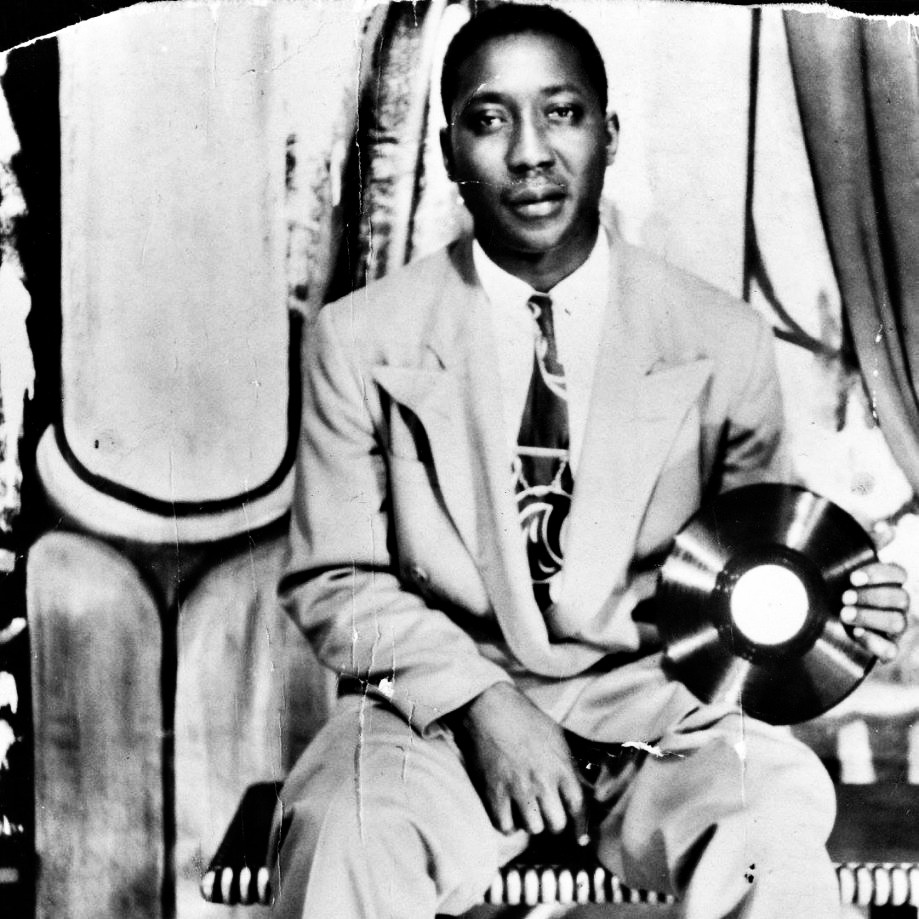
“I Just Want to Make Love to You” - Muddy Waters
Album: Single release
Released 1954 
It's obvious what Muddy Waters is after in this sultry blues number. He doesn't expect his woman to take on the traditional domestic responsibilities like cooking, cleaning, or doing laundry, as long as she's available for lovemaking.
Also known as “Just Make Love To Me”, it was written by Willie Dixon, a Chicago bluesman who played bass for Chess Records' house band and wrote tunes for the label, often deciding who would record what.
He went on to become an influential figure in blues and rock 'n roll, performing on early hits from Chuck Berry and Bo Diddley and writing the blues standards
“Little Red Rooster”  ,
“Hoochie Coochie Man”
,
“Hoochie Coochie Man”  , and
“Spoonful”
, and
“Spoonful”  , among others.
, among others.
Waters is accompanied by Dixon on bass, Little Walter on harmonica, Jimmy Rogers on guitar, Otis Spann on piano and Fred Below on drums.
Waters, whose original version landed at #4 on the R&B chart, recorded this again for his 1968 album, Electric Mud, with the psychedelic soul group Rotary Connection as his backing band. It also showed up on 1967's Super Blues, a collaboration between
Waters, Bo Diddley, and Little Walter.
Several other artists recorded this, including
The Rolling Stones  ,
The Yardbirds
,
The Yardbirds  ,
The Kinks,
The Righteous Brothers
,
The Kinks,
The Righteous Brothers  ,
Grateful Dead
,
Grateful Dead  ,
Tom Petty and the Heartbreakers
,
Tom Petty and the Heartbreakers  ,
Rod Stewart
,
Rod Stewart  ,
Van Morrison
,
Van Morrison  ,
Adele
,
Adele  , and many more.
, and many more.
Foghat  earned their first hit when they included the cover on their 1972 debut album,
earned their first hit when they included the cover on their 1972 debut album,
Etta James  recorded this for her debut album, At Last! (1960), as the flip-side to the hit title track. In a distinct change from Dixon's original lyrics, James is eager to tackle the domestic chores for her lover/husband that Waters said he didn't want.
While he insisted, “I don't want you to bake my bread”, she sang, “All I want you to do is to bake your bread, just to make sure that you're well fed.”
recorded this for her debut album, At Last! (1960), as the flip-side to the hit title track. In a distinct change from Dixon's original lyrics, James is eager to tackle the domestic chores for her lover/husband that Waters said he didn't want.
While he insisted, “I don't want you to bake my bread”, she sang, “All I want you to do is to bake your bread, just to make sure that you're well fed.”
Continued ...
MORE SONGS

1941
“Country Blues” 
“I Be's Troubled” 
1947
“Gypsy Woman” 
“Little Anna Mae” 
1948
“You're Gonna Miss Me (When I'm Dead and Gone)” 
“Mean Red Spider” 
“Train Fare Home”  Live
Live 
“Sittin' Here and Drinkin' (Whiskey Blues)” 
“Streamline Woman”  Live
Live 
“Muddy Jumps One” 
“I Can't Be Satisfied” 
“Little Geneva” 
“Canary Bird” 
1954
“Just Make Love to Me (I Just Want to Make Love to You)”  Live
Live 
“I Just Want to Make Love to You” - Muddy Waters 1941 - 1977 Continued ...
Muddy Waters, official website (Muddy Waters Discography) / Rock & Roll Hall of Fame / Billboard / All Music / Song Facts /
Ultimate Classic Rock / Muddy Waters
Image: “I Just Want to Make Love to You (Single release)” by Muddy Waters
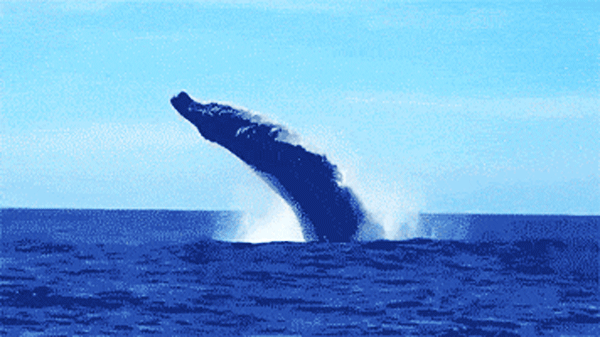
Trivia
● What is suspended from the ceiling of the American Natural History Museum?
Answer to Trivia
READ MORE: American Natural History Museum
● The French phrase “espirit de corps” translates in English to what?
Answer to Trivia
READ MORE: Attorney At Work World History Encyclopedia.org
● Besides the Sun, what is the closest star to Earth?
Answer to Trivia
READ MORE: EarthSky.org
● What is the astronomical term for three celestial bodies aligning?
Answer to Trivia
READ MORE: Astronomical Society.org
● What organisation was given the only Nobel peace prize awarded during World War I?
Answer to Trivia
READ MORE: History.com

A Test for People Who Know Everything
From the Jeopardy Archives Category - “GONE FISHING” ($200)
“An idiom declares you should either “Fish or” do this, but if you slice a chunk of fish for your hook, you're doing both.”
Answer to Jeopardy READ MORE: Phrases.org.UK
From the Jeopardy Archives Category - “GONE FISHING” ($400)
“Spincast is a type of this on your rod that spools in your line.”
Answer to Jeopardy READ MORE: Field and Stream
From the Jeopardy Archives Category - “GONE FISHING” ($600)
“Before fishing with “friends”, you may want to do this to the water, dumping some ground-up fish in the water around you.”
Answer to Jeopardy READ MORE: Take Me Fishing.org
From the Jeopardy Archives Category - “GONE FISHING” ($800)
“Black & amp;blue are 2 species of this sport fish & there's a multimillion-dollar Black & Blue Tournament to catch them off Baja California.”
Answer to Jeopardy READ MORE: Bisbee's
From the Jeopardy Archives Category - “GONE FISHING” ($1,000)
“This type of fishing involves gently flinging the rod back & forth, letting the heavier line propel the light lure.”
Answer to Jeopardy READ MORE: Take Me Fishing.org

Joke of the Day

Genie In A Lamp
A guy was in a cave, looking for treasure. He found an old lamp, rubbed it, and a genie came out.
The genie said, “I will grant you three wishes, but your ex-wife will get double.”
The man agreed, and said “I wish I had a mansion.”
The genie granted it, and his ex-wife got two mansions.
The man said, “I would like a million dollars.”
The genie again granted it and his ex-wife got two million dollars.
Then the man said, “Scare me half to death.”
































